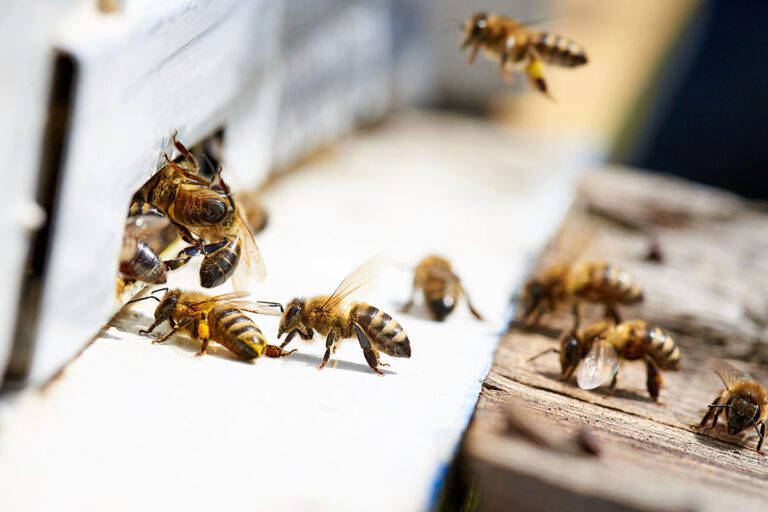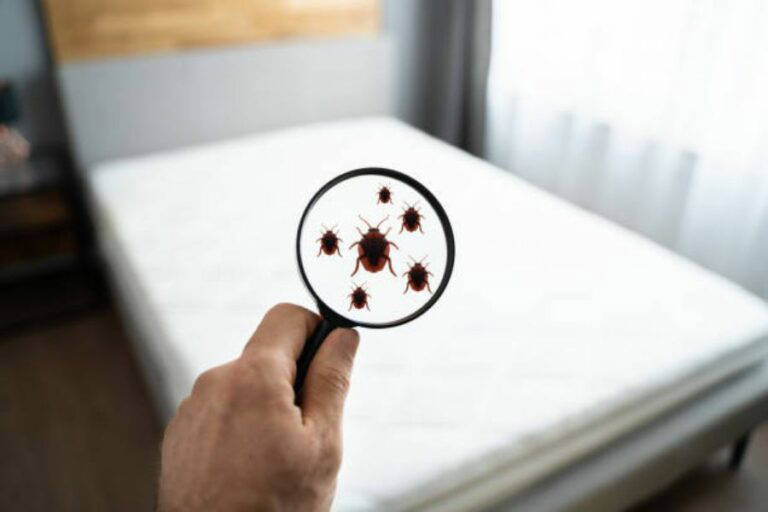Clothes Moth Control Guide
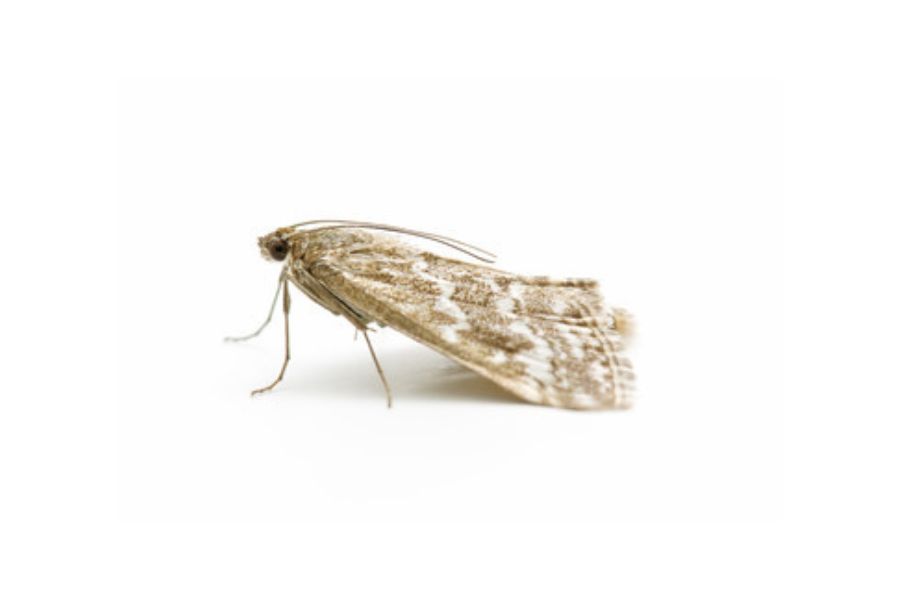
Mastering Clothes Moth Control: From Fabric Preferences to Infestation Signs and Effective Elimination Methods
Welcome to our comprehensive guide on dealing with clothes moths! If you’ve ever encountered those pesky little insects that wreak havoc on your favourite fabrics, you’re not alone. Clothes moths can be a significant nuisance, causing damage to clothing, blankets, and other textiles around your home. But fear not! In this blog, we’ll address all your burning questions about clothes moths, from their fabric preferences to signs of infestation, prevention techniques, and even natural ways to eliminate them. Whether you’re battling an existing infestation or want to take proactive measures to protect your wardrobe, this guide will equip you with the knowledge and strategies you need. So, let’s dive in and learn how to effectively deal with clothes moths.
Signs of a Clothes Moth Infestation:
Clothes moths leave behind several tell-tale signs of their presence. Look out for these indicators to identify a potential clothes moth infestation:
- Visible damage to fabrics: Look for small, irregular holes in your clothing, blankets, or upholstery.
- Larvae casings: Clothes moth larvae spin silken tubes or cases, which are often found in dark corners or hidden areas.
- Adult moths: Spotting adult moths flying around or resting on walls, ceilings, or clothing can indicate an infestation.
- Faecal pellets: Tiny, grain-like droppings may be present near infested materials.
Are Clothes Moths Attracted to Certain Fabrics?
Yes, clothes moths are known to be attracted to specific types of fabrics, particularly those made from animal fibres such as wool, fur, feathers, and silk. These fabrics contain keratin, a protein that serves as a food source for clothes moth larvae. However, it’s important to note that clothes moths can infest other materials as well, including synthetic blends that contain some animal fibres.
Can Clothes Moths Survive in Cold Temperatures?
No, clothes moths have a lower tolerance for cold temperatures. They prefer warmer environments and are less likely to survive in extremely cold conditions. Freezing temperatures can be an effective method to kill clothes moth larvae and eggs. If you suspect infestation, placing infested items in a freezer for a few days can help eradicate them.
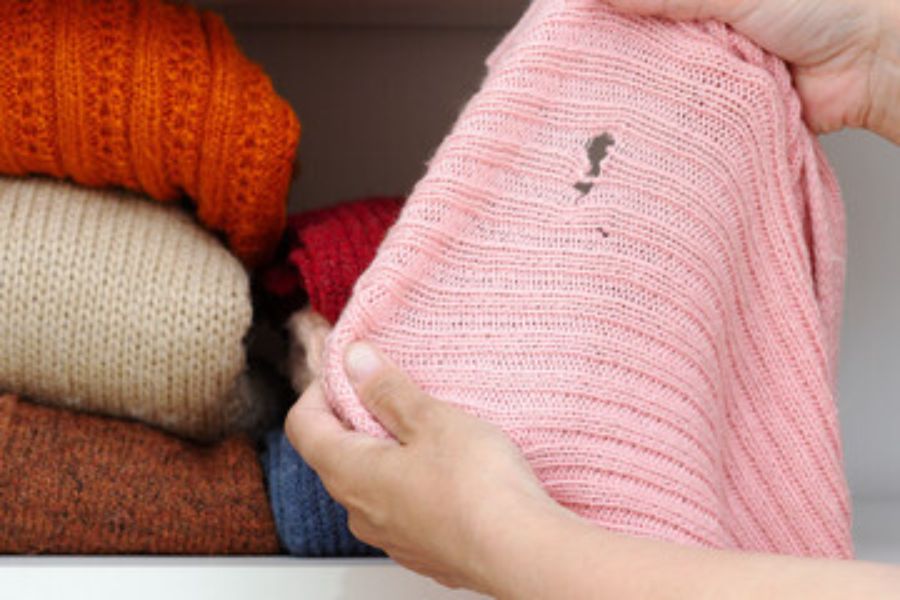
Specific Storage Techniques to Prevent Clothes Moth Damage:
Implementing proper storage techniques can significantly reduce the risk of clothes moth damage. Here are some tips:
- Clean garments before storing: Wash or dry clean clothing items before storing them to remove any food particles or eggs that might attract clothes moths.
- Store in airtight containers: Use sealed containers, such as plastic bins or vacuum-sealed bags, to prevent moths from accessing stored items.
- Use moth repellents: Consider using natural repellents like lavender sachets, cedar blocks, or herbal repellent sprays in storage areas to deter clothes moths.
- Regularly inspect and clean storage areas: Routinely check stored items for signs of infestation and clean storage spaces to remove any potential food sources.
Eliminating Clothes Moths without Using Pesticides:
Yes, clothes moths can be eliminated without relying on pesticides. Here are a few pesticide-free methods:
- Freezing: As mentioned earlier, subjecting infested items to freezing temperatures can kill clothes moth larvae and eggs.
- Heat treatment: Exposing infested items to high temperatures, either through hot washing, tumble drying, or steam cleaning, can effectively eliminate clothes moths.
- Vacuuming: Thoroughly vacuuming infested areas, including carpets, rugs, and upholstery, helps remove eggs, larvae, and adult moths.
- Sticky traps: Placing sticky traps near infested areas can catch adult moths, reducing their population.
What are the differences between clothes moths and pantry moths?
Clothes Moths:
- Habitat: Clothes moths primarily infest areas where natural fibres like wool, silk, fur, and feathers are present, such as closets, wardrobes, and upholstered furniture.
- Diet: Clothes moth larvae feed on animal-based materials, particularly keratin found in animal fibres.
- Damage: They cause damage to fabrics, leaving behind irregular holes or chewed areas in clothing, blankets, and other textiles.
- Behaviour: Clothes moths prefer dark, undisturbed areas and are not attracted to light. They are also known to be less active and elusive.
Pantry Moths (Indian Meal Moths):
- Habitat: Pantry moths infest food storage areas like kitchens, pantries, and cabinets, targeting a wide range of dry food products.
- Diet: Their larvae feed on a variety of dry goods, including grains, cereals, flours, nuts, and dried fruits.
- Damage: Pantry moth infestations are characterised by webbing, silk-like threads, and cocoon-like structures in food products. Contaminated items may contain larvae, pupae, or adult moths.
- Behaviour: Pantry moths are attracted to light and are more active in the evenings. They may fly around kitchens and food storage areas.
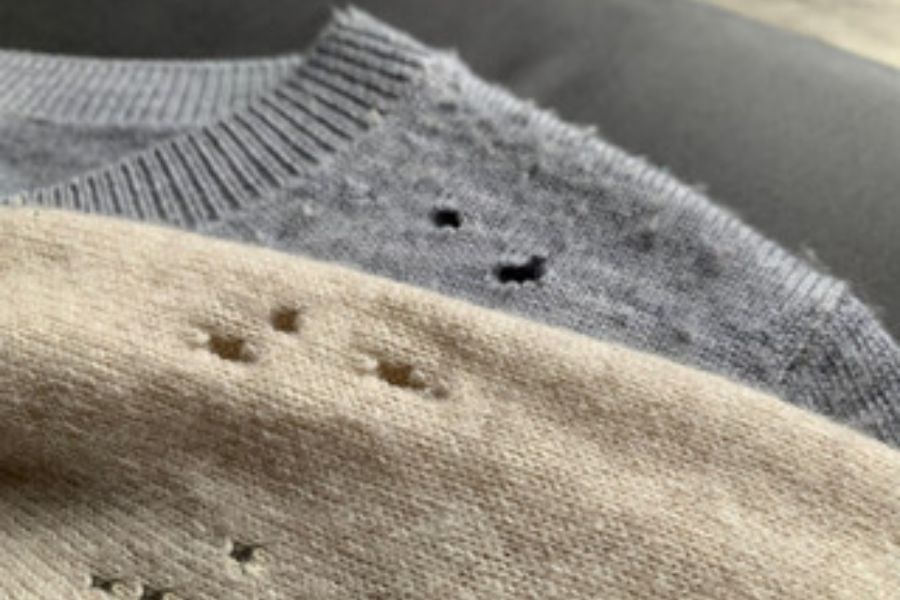
Can Clothes Moths Infest Synthetic Fabrics?
Clothes moths are primarily attracted to fabrics that contain animal fibres, but they can also infest synthetic fabrics under certain circumstances. While synthetic fabrics like polyester or nylon are not a preferred food source for clothes moth larvae, they can still be infested if they are blended with natural fibres. Clothes moths are more likely to target synthetic fabrics if they contain wool, fur, or silk fibres. Additionally, if synthetic fabrics are soiled with food stains, perspiration, or other organic substances, they may attract clothes moths. Therefore, it’s important to maintain cleanliness and take preventive measures, even with synthetic fabrics, to minimize the risk of infestation.
What Kills Clothes Moths Instantly?
There are a few methods you can use to kill clothes moths instantly:
- Heat: Clothes moths are sensitive to high temperatures. You can place infested items in a hot dryer or use a steam cleaner to expose them to heat, effectively killing both larvae and adult moths.
- Freezing: Similarly, exposing infested items to freezing temperatures for several days can also kill clothes moth larvae and eggs.
- Vacuuming: Vacuuming infested areas, including carpets, rugs, upholstery, and closets, can help physically remove adult moths, larvae, and eggs, eliminating them from the environment.
Can Clothes Moths Survive in the Washing Machine?
No, clothes moths cannot survive the washing machine. Washing infested items in hot water (at least 120°F or 50°C) can effectively kill clothes moth larvae, eggs, and adult moths. Additionally, the agitation and detergent used in the washing process help dislodge and remove any remaining insects. It is advisable to thoroughly clean and inspect the washing machine afterward to prevent any potential infestation spread.



